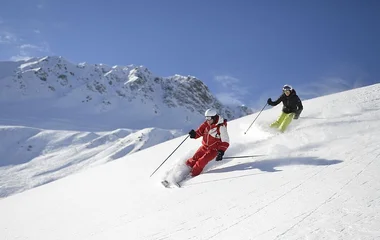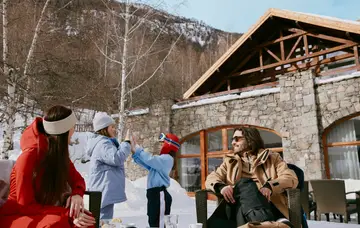
Join a course
Learn the skills to safely snowboard or ski off-piste before you go – an off-piste course will not only teach you how to ski the snow, but also how to read the environment.
“We teach people about loading (snowfall, wind transport and rain), how to look at recent avalanches in the area, how to recognise collapsing sounds or cracks on the snowpack and sudden rise in temperatures, and how to assess the steepness of the terrain and avalanche forecast,” says Fred.




















